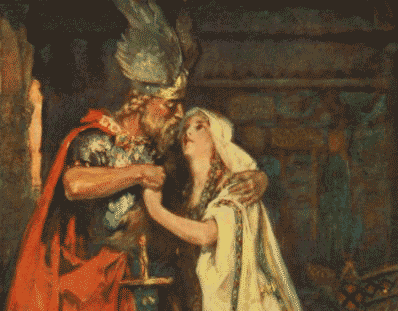<![CDATA[It seems that it wasn't only Viking men that went on conquests throughout Europe. According to archaeological studies performed around England, nearly as many Viking burials of women have been found as men. The study was published in the "Early Medieval Europe" journal by Shane Mcleod, lecturer at the Centre for Medieval and Early Modern Studies at the University of Western Australia. He studied the Norse migration to Eastern England, where it is traditionally thought that males far outnumbered females. He states that not only is that belief false, but women were in England from the earliest stages of the campaigning period, from AD 865. The Vikings invaded England in around 793 AD, when they attacked a monastery at Lindisfarne. They killed all the monks and stole Saint Cuthbert's relics and other valuable things. They then continued their rampage through the eastern coastal regions of England. They were not that many in number, but they planned their attacks very carefully, which made them so devastating. They then used their newly claimed land in Eastern England to found their own kingdom, called the Danelaw. In the study, McLeod notes that in the past there was some evidence of early Norse female settlement, but not enough to overturn the idea that women did not migrate to England in the same time and numbers as the men did. The recent excavations have turned up Norse-style jewellery, which would point to a larger number of female settlers. In McLeod's study, a total of fourteen Viking burial sites from the Danelaw area have been explored. The age of the burial sites was determined by radioisotope dating and Norse grave goods revealed where the occupants were born. McLeod and his team used the bones found in each grave to determine the gender. Previously, it was often assumed that the skeletal remains in these graves belonged to males, because of the weaponry included in them. After collecting all the data from the excavation, they found that of the fourteen burials, six of them contained women, seven men, and one could not be discerned. Weapons were found in the graves of the women as well as the men, which meant that Viking women were heavily involved in conquests, at least those in Eastern England. McLeod states in his study that the six women and seven men found should end the assumption that the majority of the Viking invaders were male. It is possible the ratio of male and female migrants was around 50:50. There was another burial site that was looked at in the past called Repton Woods. It was here that several swords and a shield were recovered. The study states that the three burials in which the swords were found could be sexed as female. McLeod wrapped up the study by saying that women accompanied the male Vikings in far greater numbers than what was previously proposed. The ratio of females to males could have ranged from a third to roughly equal. ]]>
Viking Women May Have Accompanied Men to England
